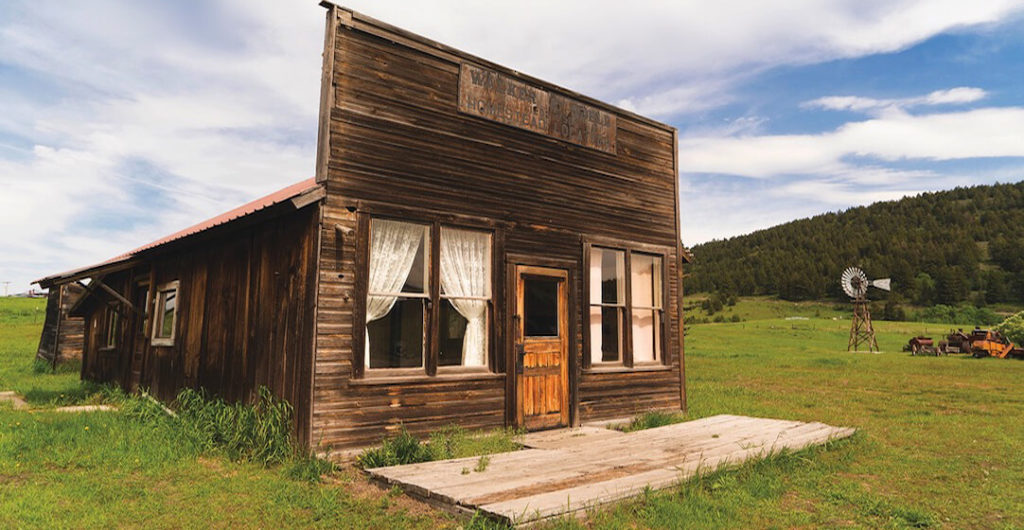Don’t Miss This Scenic Drive
Art, history and natural beauty coalesce in this pastoral part of Washington state.
East of the Cascades, where the weather is drier and the sun more reliable, a long stretch of pavement runs north and south along the Okanogan River. The Okanogan Trails Scenic Byway is a picturesque drive around rolling hills, past scrub and sagebrush and through subalpine forests. Passing through the Confederated Tribes of the Colville Reservation, the 83-mile route runs from the Canadian border to the small town of Pateros, with each stop full of hidden gems that will leave a lasting impression on those who travel it.
The Route
The Okanogan Trails Scenic Byway skips large cities, instead passing a dozen small communities with fewer than 5,000 residents. The road follows the historic Caribou Trail, a once well-trodden trading route used by tribes, then later by trappers and miners. Today, the route is known for great views, captivating art and outdoor adventures under the Okanogan’s open sky. Wineries, plentiful shopping and fancy restaurants are replaced with rustic, small-town charm and big, empty spaces.

Art and History
Art and sculptures are found around the byway, highlighted by the highly skilled works of Virgil “Smoker” Marchand of the Arrow Lakes Band of the Colville Confederated Tribes. Smoker’s sculptures speak to the rich Indigenous history of the region, and their impact spans far beyond. Luckily, many of his greatest works are found in the towns along or near the byway. Omak, the largest town on the route, features an impressive array of artwork, with murals and decorated fire hydrants in the downtown core. One attraction is a sculpture by Marchand at Eastside Park titled “How the Animals Got Their Names.”
You’ll find another of his iconic sculptures above a rock outcropping at the top of Disautel Pass on U.S. Highway 155. Just off the road, you’ll see a lifelike sculpture of Bigfoot. Above Omak Lake, Marchand’s lifelike bighorn sheep sculpture overlooks the water, and his mule deer sculpture is found in the town of Conconully.
While in town, look for the 90 wood quilts on the sides of several businesses, made by local artists. For an intriguing look back on early-1900s life in the region, make a stop in the town of Okanogan. The Okanogan County Historical Society displays the photography of Japanese pioneer Frank Matsura, whose sharp eye documented the people, scenery and structures of the era. His work is also seen on 20 or so murals spread throughout town.

Ghost Towns
Heading north up near the Canadian border, a pair of ghost towns — Molson to the east and Nighthawk to the west — offer a real-life glimpse into the area’s past. Molson, financed by the same Molson family famous for the beer, was once a mining boom town and a stop on the Great Northern Railroad. Now empty, it can be explored via the outdoor museum, with many buildings open to the public. Nighthawk is one of the oldest mining areas in the state, dating back to the 1860s. Although the townsite is located on private property, you still can see many of the old structures from the west side of the river.
Read more about Washington ghost towns.

Outdoor Recreation
Lovers of butterflies, birds and other animals must go to the Sinlahekin Wildlife Area north of Conconully. The Sinlahekin is the oldest wildlife area in Washington, initially preserving mule deer’s winter range. More than 200 species of birds, 60 mammals and 90-plus butterfly species now frequent the area.
The butterflies are best seen in the late spring and early summer along 8 miles of trails that wind through the preserve. South of Tonasket, the McLaughlin Canyon Trail was once part of the Caribou Trail and is a great spot for wildflower viewing in the spring and early summer. West of here, Conconully State Park is a nice, seasonally open detour, giving relaxing picnic and boating opportunities.
If time is short, make a trip to the Omak Balancing Rock near Omak Lake. Reached after a short trail, this glacially deposited boulder, precariously perched, is said to be a symbol of nature’s perfection by the Confederated Tribes. For longer adventures, the Whistler Canyon Trail section of the Pacific Northwest Trail is a testament to the region’s wilderness.
Depending on your energy level, you can hike out-and-back routes from a few miles to the entire 24-mile trek. Once summer is over, take a detour and drive over Loup Loup Pass, west on state Route 20 toward Twisp. Golden larches can be seen in the fall, while the winter months give you a chance to ski with the locals at Loup Loup Ski Bowl. Cross country skiers should head to the Methow Trails by Winthrop to enjoy over 136 miles of groomed trails. The spring flowers here are also amazing, making the Okanogan Trails Scenic Byway a year-round wonderland.
– Written by Douglas Scott, last updated in September 2022
– Top image of Okanogan Scenic Byway by Justin-Haug/WDFW.









